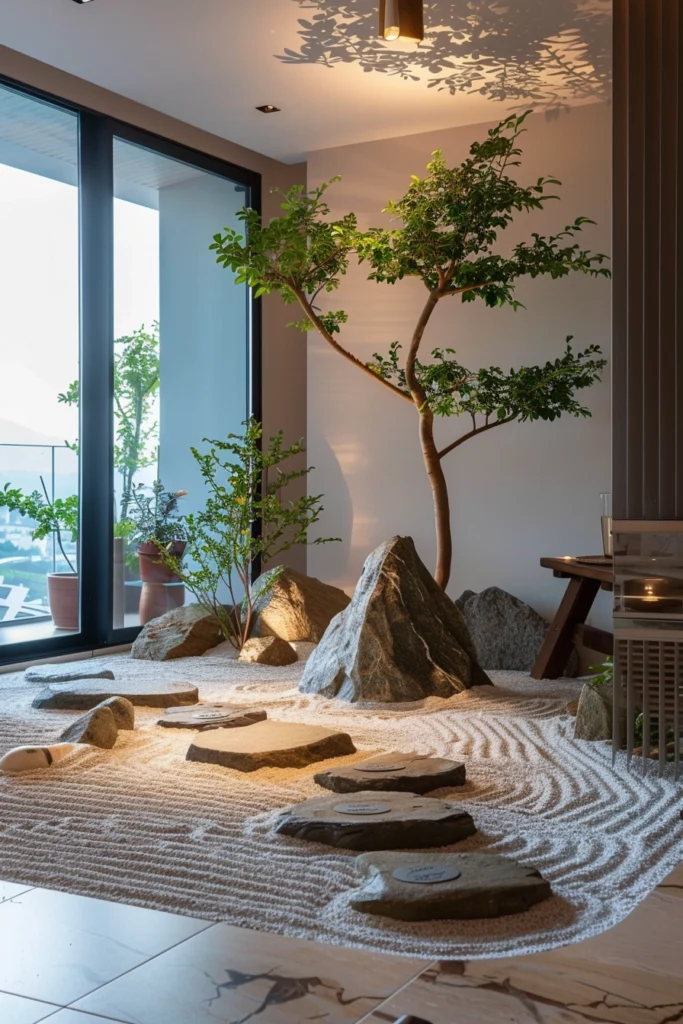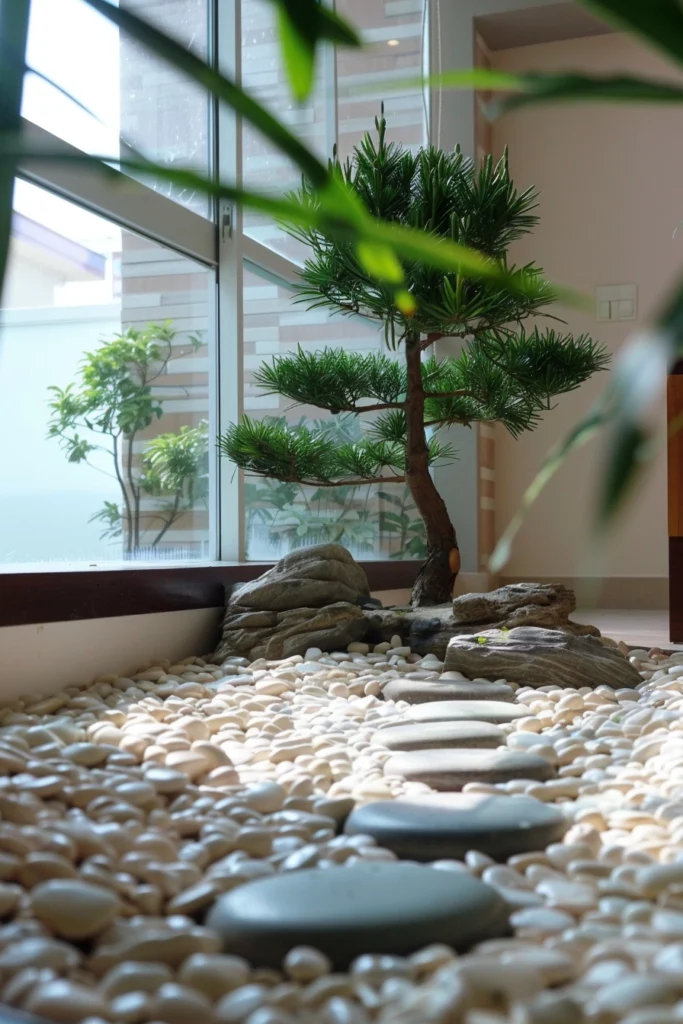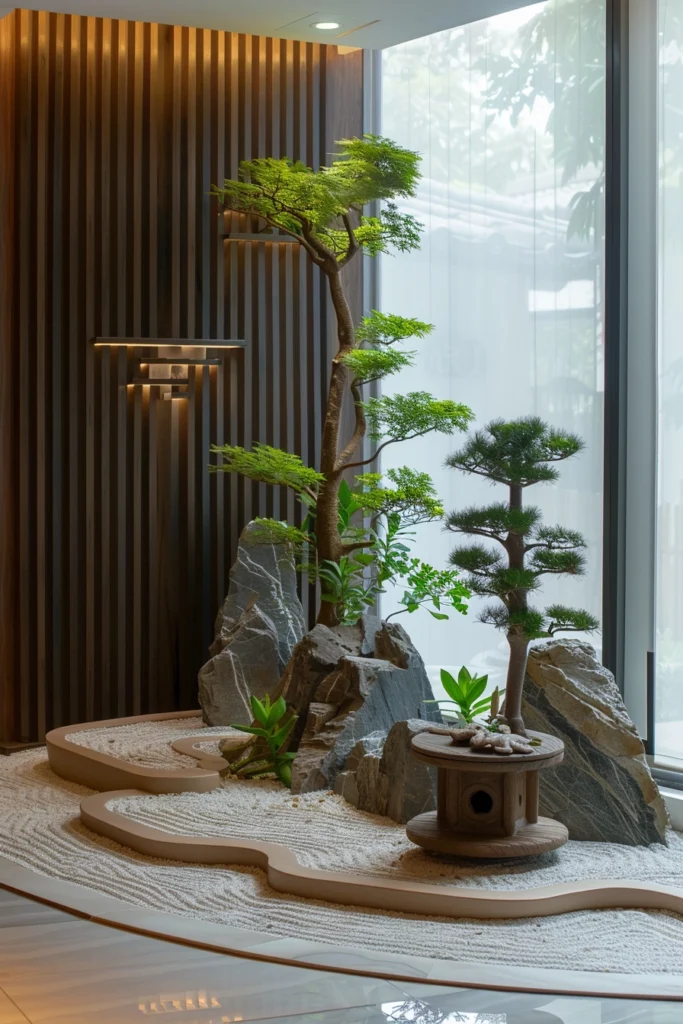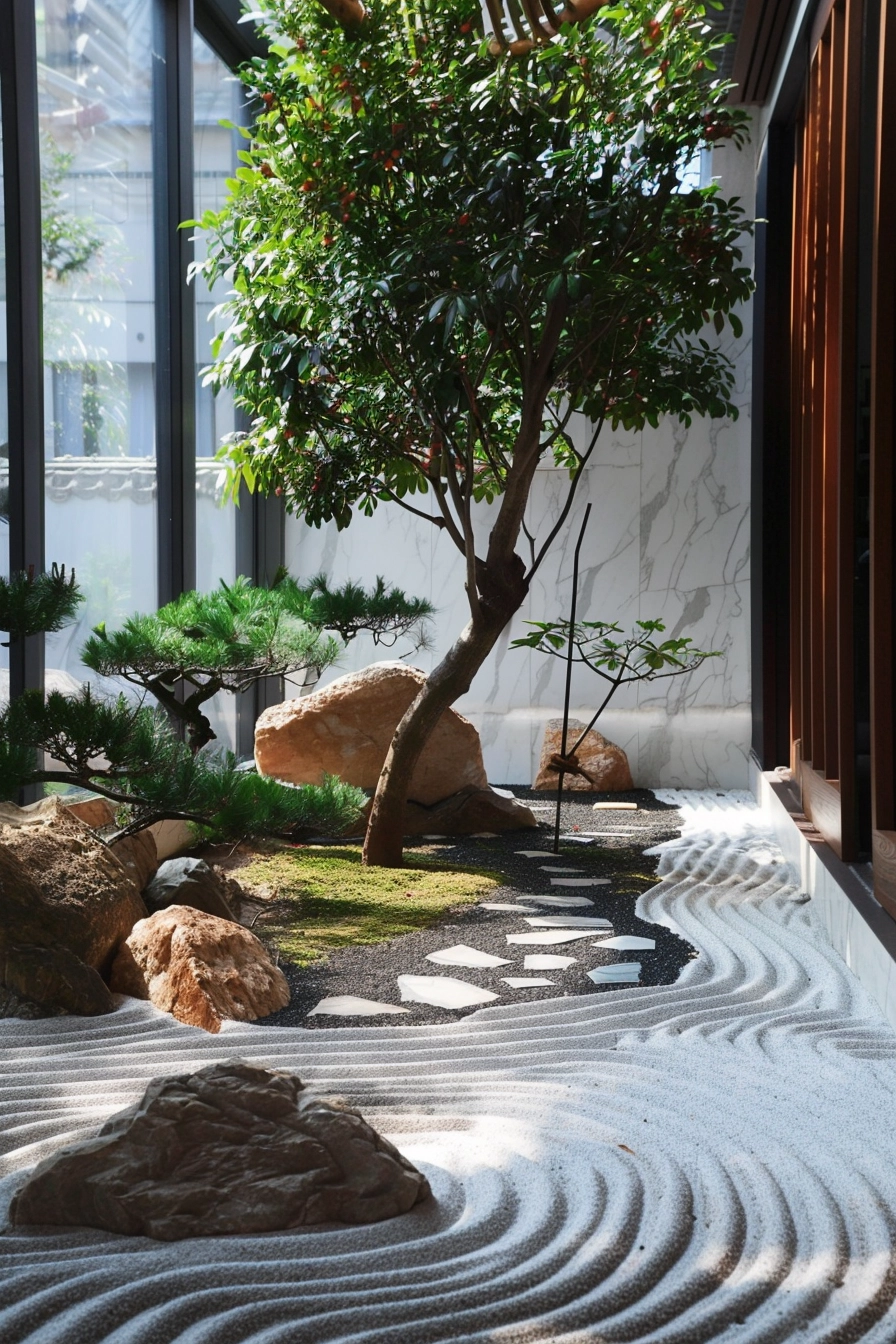Welcome to my guide on how to create a serene and tranquil indoor Zen garden with the help of houseplants. Incorporating plants into your indoor space can bring a sense of peace and serenity, while also adding beauty and greenery to your home. In this step-by-step guide, I will provide you with tips and ideas on how to design your own indoor Zen garden using indoor plants that are suitable for creating a calming and minimalist atmosphere.
When it comes to Zen garden design, it’s all about simplicity and tranquility. Zen gardens typically feature sleek, architectural plants that emphasize foliage rather than flowers. By focusing on the shapes, textures, and shades of the plants, we can create a peaceful oasis right in our own homes.
Key Takeaways:
- Choose low-maintenance houseplants with sleek foliage for your indoor Zen garden.
- Create contrast between plants and stones by using planters of different sizes and materials.
- Consider making a tree, such as a bonsai or a ficus, the centerpiece of your indoor Zen garden.
- Recreate a Zen garden in container form by carefully arranging rocks, stone, and gravel.
- Keep the color palette simple and serene with shades of green, white, and earth tones.

Essential Elements of a Zen Garden
When creating a Zen garden, it’s essential to incorporate the key elements that promote a sense of tranquility and harmony. These elements include rocks and sand, plants, gravel or sand patterns, water features, pathways and seating areas, aesthetic lighting, succulents, and regular maintenance.
Zen Garden Rocks and Sand
At the heart of a Zen garden are rocks and sand. By strategically placing rocks and raking sand or gravel to represent islands, mountains, and water, you can create a serene and peaceful atmosphere. These natural elements connect you to the tranquility of nature and provide a focal point for meditation and contemplation.
Incorporating Plants in Zen Gardens
In addition to rocks and sand, plants play a crucial role in Zen garden design. Choose plants that have a minimalist and architectural aesthetic, such as bamboo, Japanese maples, or bonsai trees. These plants add texture, visual interest, and a calming greenery to the garden space.
Using Gravel or Sand to Represent Water
Gravel or sand can be used to create patterns that mimic the tranquil movement of water. By raking the gravel or sand in a specific pattern, you can evoke a sense of serenity and flow. This technique is a meditative practice in itself, promoting mindfulness and focus.
“The rhythmic motions of raking gravel or sand can be a form of moving meditation, helping to calm the mind and create a sense of inner peace.” – Zen Garden Enthusiast

Choosing Plants for a Zen Garden
When selecting plants for a Zen garden, opt for low-maintenance options that align with the minimalist aesthetic. Succulents, such as jade plants or sempervivums, are excellent choices as they require little water and thrive in dry conditions. Bonsai trees also add a touch of elegance and symbolize the harmony between humans and nature.
Using Water Features in Zen Gardens
To further enhance the tranquil ambiance of a Zen garden, consider incorporating water features such as small fountains or ponds. The soothing sound of water can create a calming auditory experience, promoting relaxation and mindfulness.
Creating Pathways and Seating Areas in Zen Gardens
Pathways and seating areas are essential in a Zen garden as they provide opportunities for reflection and contemplation. Use stepping stones or gravel paths to guide visitors through the space, and strategically place seating areas for moments of peaceful introspection.
Adding Aesthetic Lighting to Zen Gardens
To extend the enjoyment of your Zen garden into the evening hours, incorporate aesthetic lighting. Soft and warm lights can create a magical ambiance, showcasing the beauty of the garden and inviting evening relaxation.
Adding Succulents to Zen Gardens
Succulents, with their diverse shapes and textures, are ideal for adding visual interest and a touch of nature’s resilience to a Zen garden. Incorporate succulents like echeverias, haworthias, or agaves into your garden design, bringing a sense of tranquility and harmony.
Tips for Maintaining a Zen Garden
- Regularly prune plants to maintain their shape and prevent overgrowth.
- Remove weeds promptly to keep the garden tidy and prevent competition for resources.
- Monitor water levels in water features and ensure they are clean and functioning correctly.
- Occasionally rake and refresh gravel or sand patterns to keep them looking crisp and well-maintained.
- Inspect lighting fixtures regularly and replace any faulty bulbs or wiring.
By incorporating these essential elements and following these maintenance tips, you can create a Zen garden that fosters tranquility, promotes mindfulness, and provides a peaceful sanctuary within your own space.

Conclusion
Creating a Zen garden with indoor plants is an excellent way to bring serenity and greenery into your home. By following the steps outlined in this article and incorporating the essential elements of a Zen garden, you can create a peaceful and calming space for relaxation and contemplation.
The use of sleek, architectural plants and minimalist design principles promotes a sense of tranquility and simplicity. By selecting plants with clean lines and subtle colors, such as bamboo or snake plants, you can create a harmonious atmosphere.
Additionally, incorporating rocks, gravel, and water features adds texture and visual interest to your indoor Zen garden. These elements evoke a sense of nature and grounding, further enhancing the peaceful ambiance of your space.
By choosing plants that are easy to care for and incorporating elements like pathways and seating areas, you can create a space that promotes peace and well-being. An indoor Zen garden provides a respite from the hectic outside world and offers a sanctuary for relaxation, self-reflection, and mindfulness.
In conclusion, the benefits of having an indoor Zen garden are numerous. It not only adds aesthetic appeal to your home but also contributes to a sense of calm and tranquility. The combination of indoor plants, soothing design elements, and careful attention to detail can transform any space into a peaceful haven. Embrace the beauty of nature within your home and create an indoor Zen garden that brings a sense of serenity to your daily life.

